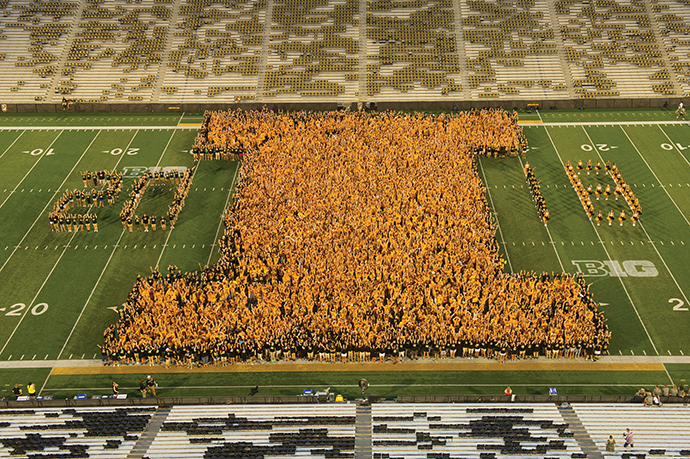Education is revered in Iowa, and its cachet is contagious.
The state not only boasts the highest high school graduation rate in the nation (88 percent), it also attracts students from throughout the nation and the world to attend its colleges and universities. It also attracts businesses — from startups to corporations — who know they can partner with those schools for the good of all concerned.
The state’s higher education profile includes three regent universities — Iowa State University in Ames, University of Iowa in Iowa City and University of Northern Iowa in Cedar Falls — as well as 29 independent schools, 15 community and technical colleges, and five nursing and healthcare institutions. That’s not bad for a territory whose population is the 29th largest in the country. It’s also a substantial footprint for knowledge, innovation and workforce development, and a key asset to help the state achieve Gov. Terry Branstad’s goal of seeing 70 percent of Iowans in the workforce having two- and four-year college degrees, certificates, and other valuable credentials and experience by 2025.
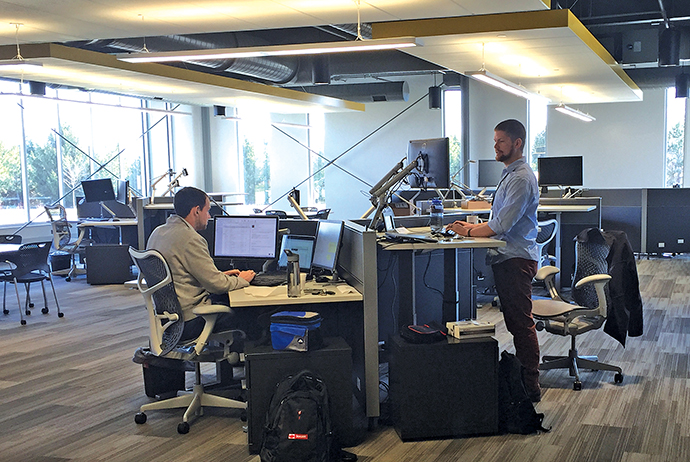
The Lumina Foundation tracks those very numbers, and in April 2016 released its latest report on postsecondary attainment (associate’s degree and higher), “A Stronger Nation.” When the organization started tracking the data in 2008, the rate in Iowa stood at 38.8 percent. In 2014, when high-quality credentials, certificates and certifications are counted, the state’s rate rises to 47.3 percent — 16th in the nation, boosted by rates above 63 percent in Johnson County, home to the University of Iowa in Iowa City, and over 61 percent in Story County, home to Iowa State University in Ames.
Cultivation Checklist
That’s where Pella, Iowa–based Vermeer Corporation, a maker of industrial and agricultural equipment with 3,000 employees globally, in July 2015 announced plans to build a new Applied Technology Hub at the Iowa State University Research Park in Ames. Vermeer, which already had a center at the park, said the facility is intended for software engineers, and is expected to be complete in May 2016.
“We are excited to continue our relationship with Iowa State to demonstrate how partnership between Iowa’s education system and private industry can best be applied,” said Vermeer COO Jason Andringa.
That’s just what Iowa State leaders have in mind, as they strive to make Ames a key gateway to a region the state is calling the Cultivation Corridor, and some day the ag-bioscience capital of the world.
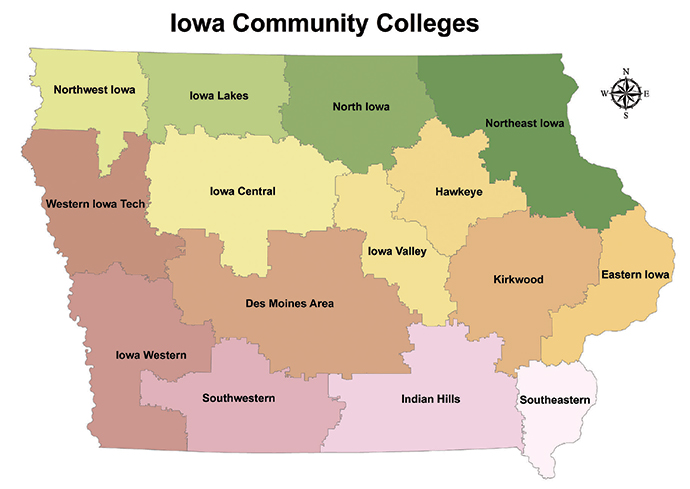
“Economic development is a top priority at Iowa State University,” wrote Michael Crum, vice president for economic development and business engagement, in the recently published Iowa Economic Development Guide, “so much so, that we recently established the Office of Economic Development and Industry Relations (EDIR) that reports directly to the university president.”
The City of Ames recently annexed nearly 200 more acres of land to allow for further expansion of the park itself. “In 10 to 15 years,” continued Crum, “it is expected that the Research Park will provide approximately 1.8 million sq. ft. of office and lab space for more than 6,000 employees.”
A spring check-in showed nearly 140 job openings at firms located in the park, among them BASF Plant Science, Novozymes, Iowa-based window and door maker Pella Corp., and cloud-based technology firm Workiva, which now employs 950 people companywide and runs it all from Ames.
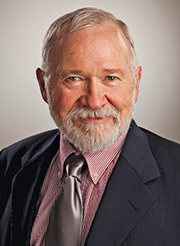
Founder and CEO of Harrisvaccines
More are sure to come as those companies’ achievements continue to mount. A big milestone came in March 2016, when Merck Animal Health announced that its recent acquisition, Harrisvaccines, had been granted licensure of its Prescription Product, RNA Particle vaccine platform from the U.S. Department of Agriculture. Before its November 2015 acquisition by Merck, the firm also was awarded the $6-million, two-year contract to provide avian flu H5 vaccine to the USDA for a stockpile of the vaccine.
Dr. Hank Harris, founder and CEO of Harrisvaccines, is one of the world’s foremost authorities on infectious diseases of swine and related pathogens in people. In the early 1980s, he was one of the founders and a CEO of NOBL Laboratories, an animal health vaccine company that was acquired by Germany’s Boehringer Ingelheim Vetmedica Inc. (BIVI) — which has since continued to expand at the research park as well.
“So I feel really good about my contribution to economic development at Iowa State,” Harris says in an interview.
BIVI last year announced a major capital investment at its facilities in Fort Dodge and Ames, investing $110 million over the next four years, including a new 52,088-sq.-ft. building in the ISU Research Park. “We are grateful for the support we received from the state of Iowa, the City of Ames and the City of Fort Dodge for these activities,” said Albrecht Kissel, president and CEO of BIVI. The financial assistance package from the Iowa Economic Development Authority (IEDA) includes tax credits from the state’s High Quality Jobs program.
Harris also feels good about the evolution of policy at Iowa State from nearly zero guidance on patent filing back when he sold his professor the patent on his PhD work in the 1960s to lukewarm support when he sold NOBL.
“The support from Iowa State was absolutely essential” to the growth of the former Harrisvaccines over the past decade, he says, as were investments from the Iowa Farm Bureau and a local group of investors called the Ames Seed Capital Group. “The university, from the president on down, totally encourages faculty to start companies,” Harris says. “They know that if you’re motivated to start a company, you’re going to work like hell at your job anyway. They understand that this is good for the university.”
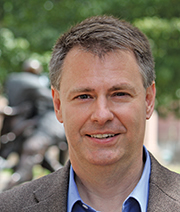
Assistant Vice President for Economic Development
The University of Iowa Research Park
It goes beyond rented lab space.
“It’s interesting, and something very few people realize,” Harris says. “If you are at the ISU Research Park, you’re like a department in the university, and that gives you buying power” on things such as chemical reagents. “Another advantage is that the ISU Research Foundation is very helpful with startups, and having policies in place to license that IP to the entrepreneur. I just met with a young faculty member the other day, and he had no idea that he would get a pretty good deal to license that back.”
In terms of freedom to pursue startup ideas, Harris says he’d put Iowa State right at the top among land-grant universities he’s encountered around the world in his storied career.
But are friendly people as accessible as friendly policies?
“Talent pool is no problem, because if you’re a molecular-based company like we are, that’s the emphasis of a lot of students here,” he says.
Has the serial entrepreneur had enough? Not yet. He’s thinking of another startup. And he’s ready to pitch his new parent company on further growth. The previous expansion was into an adjacent wing, and so didn’t require a new USDA inspection. “So,” he says, “my pitch to Merck is, ‘Well, there’s another wing on this building left.’ ”
Life-Changing
Established in 1989, The University of Iowa Research Park in Coralville, just outside the main campus’s home in Iowa City, leases building sites and space to growing technology companies that require sustained research relationships with the university. Its incubator, meanwhile, has nurtured nearly 100 UI spinouts and other new ventures since its start in 1984.
The park is just one part of infrastructure designed to support innovation. And yes, says Assistant Vice President for Economic Development David Conrad, the school’s IP policies have evolved over the years.
“We’ve developed a simplified and standardized license agreement term sheet for faculty-founded startups to make the whole process of starting a company more efficient and less contentious,” he says. “By having the term sheet vetted by attorneys, investors and companies, we’ve arrived at a deal that is more transparent and fair. We’ve also begun to publicly recognize the achievements of faculty innovators, not just those faculty who excel at basic research and scholarly work. The culture is changing, albeit slower than I would prefer. People are beginning to see the importance of combining basic and applied research to solve some of the world’s biggest challenges.”
Some of that work is unfolding at the Center for Biocatalysis and Bioprocessing (CBB), directed by longtime Chemistry Prof. Mark Arnold since early this year. Arnold says the CBB is an academic center that also has an economic development component, in the form of a fermentation facility with 13,000 sq. ft. of lab space for development of proteins and vaccines, and a CGMP facility able to produce material that can be used for Phase 1 clinical trials. The center has done contractual research and manufacturing work for companies large and small, from Iowa startups to multinational corporations, and employs a core staff of 20 that multiplies to between 200 and 300 when you start counting all the faculty and graduate students in the mix.
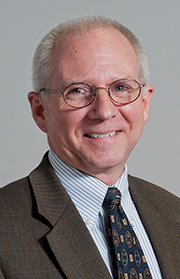
“You might think a multinational would have the resources to do this kind of work in-house,” Arnold says, but they often find it more cost-effective and quicker to work with the CBB, “and they also get the benefit of the research expertise within the faculty.”
Big pharma outsourcing such work to smaller academic and startup partners has been trending for about a decade now, but one thing that has pleasantly surprised Conrad is how often companies look to the CBB for advice on how to best run and scale up their processes. “Companies really do find it valuable to interact with our faculty,” he says, something he’d like to see more of, even as he also broadens the exposure of the facility and the university in general to a more global audience of potential partners.
Like Hank Harris, Mark Arnold is a veteran university employee, having been in Iowa City since 1982. And like Harris, he’s seen an evolution of IP policies, to the extent that he was able to spin off his own company, ASL Analytical, in 2007.
“I’ve seen a big change,” he says, “We are trying to get the faculty more involved with that aspect of their research, and interaction with companies.”
Iowa ranks 12th in the nation in its number of ACT Career Readiness Certificates, with 79,919. ACT itself was founded in Iowa City and still is headquartered there. The organization announced in March 2016 its plans to create the ACT Center for Workforce Advancement. “We want to assist individuals’ efforts to enter the workforce and be an asset to business and industry,” said ACT Vice President Scott Montgomery.
They don’t have to look far for good examples of such assets.
The American Institute for Economic Research calls Iowa City, a metro area of 161,000 that’s home to the 31,000-student University of Iowa, the No. 3 college town in the United States. The No. 1 college town? Ames, a town of 60,000 that’s home to Iowa State University, with more than 35,000 students. Meanwhile, in Greater Des Moines, nearly 49 percent of people 25 years old and up hold an associate’s degree or higher.
This Investment Profile was prepared under the auspices of the Iowa Economic Development Authority. For more information on Iowa, contact Tina Hoffman of the IEDA at 515-725-3150 or by email at tina.hoffman@iowa.gov. On the Web, go to www.iowaeconomicdevelopment.com.
